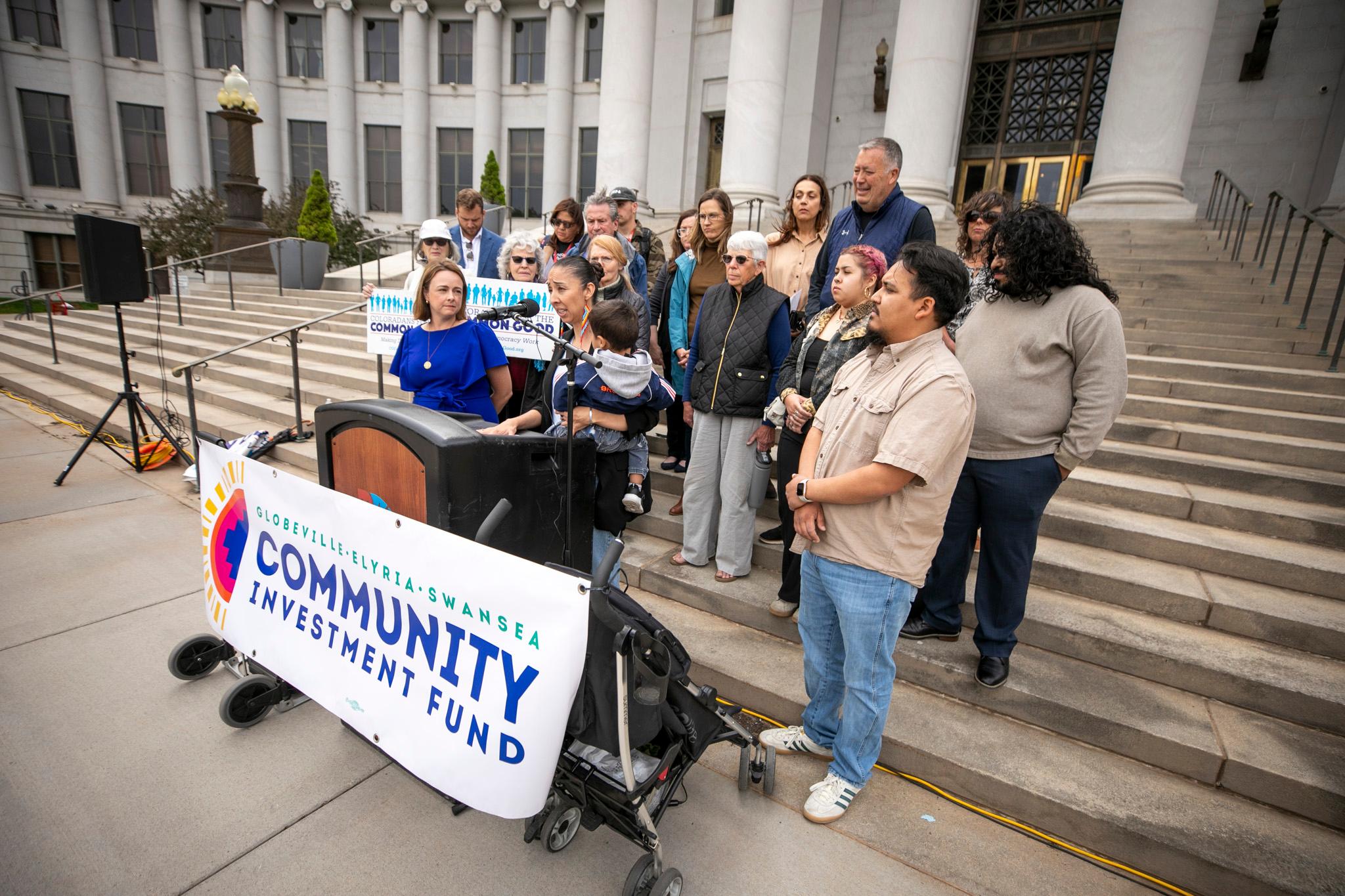By Marianne Goodland, first published in the Colorado Independent
The top race for the state legislature in 2016, at least in terms of spending by the candidates, was the contest between Republican incumbent Sen. Laura Woods of Westminster and Democratic challenger and former state Sen. Rachel Zenzinger of Arvada.
The two spent a little more than $440,000 combined. Zenzinger won by just under 1,500 votes.
But that money is peanuts, I tell ya, it’s peanuts compared to what outside groups spent on TV ads, direct mail, internet ads, door hangers and phone banks to influence the outcome of the race.
The Republican-backed Colorado Citizens for Accountable Government spent at least $670,000 to oppose Zenzinger. The Democratic Colorado Citizens’ Alliance spent $725,000. That’s a total of nearly $1.4 million, more than three times what the candidates themselves spent and the most pumped into a state legislative race by outside groups in 2016. Total spent on this one race, by both outside groups and the candidates: $1.8 million.
With the 2016 election season now completed, and final campaign finance reports filed as of Dec. 8, The Colorado Independent took one more deep dive into campaign finance reports to find out just how much was spent, who spent it and who bankrolled the expenditures. The Independent reviewed more than 700 purchases made by just three committees on races that would decide which party controlled the state House and Senate.
In the end, little changed. The Republicans held onto a one-seat majority in the Senate, although with a different seat than in the 2015 and 2016 sessions, and Democrats expanded their lead in the House by three seats.
The reports offer another reminder that while money matters -- a lot -- it’s no guarantee of victory. One race each in the House and Senate, in which the committees spent the most money, were lost by the candidates they backed.
In the 2016 election cycle, statewide candidates (which include House and Senate, county commissioners, state Board of Education, University of Colorado Board of Regents, local school board candidates and district attorneys) and outside committees spent a total of $19 million. The money went for electioneering communications, which includes cable and TV ads, radio, direct mail, phone banks, and internet advertising.
And while it’s still considerably less than was spent on ballot measures and school district funding, where committees spent $48 million just on advertising, it’s more than 50 percent above what was spent in the last presidential election year. In 2012, statewide candidates and the outside groups spent $12.2 million.
“We’ve known for a while that big money from out of state has been moving into state and local races,” said Luis Toro of Colorado Ethics Watch, which also monitors campaign spending.
This year’s spending represents an increasing trend, he added.
“We think there’s too much money in state politics. We have decent laws restricting flow of money to candidates,” but those laws have been weakened by rulings, such as the Supreme Court’s 2010 Citizens United decision, that have allowed outside sources to pour more and more money into races, he explained.
So what does this mean for candidates who end up at the state Capitol? ““If money talks, more money talks more loudly,” Toro said.
Read the rest of the article, with lots details about who spent what, at the Colorado Independent.











